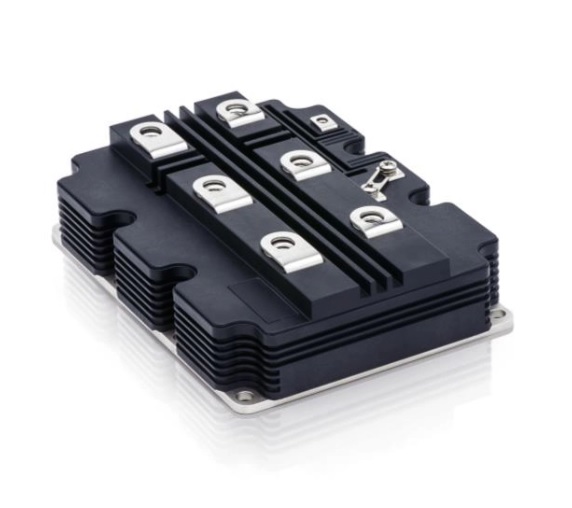DC solutions for the traction industry
Many traction networks are executed in direct current (DC), or DC voltage. This DC voltage is generated from the alternating current (AC), or AC network, via transformation and directing in the substations.
The DC overhead line feeds the traction vehicles, where a drive system drives the motor of the traction vehicle through frequency control. The transformation and regulation of energy in the infrastructure and traction vehicles must be optimised, which requires specialist knowledge of power electronics.
In the network industry, there has been an increase in the use of DC, at least partly due to a strong increase in (semi-) electrically powered transport. The advantages of DC are numerous, as they are in industrial applications, but security is a challenge. Modern solutions make the use of DC safer and more efficient.
Advantages of DC over AC include:
- Less energy loss;
- About five times as much current can pass through the cable, at the same diameter as AC;
- Many electrical appliances run on DC. Constantly converting energy from AC to DC and vice versa causes unnecessary energy losses.
- Green energy is generated in DC.
Power electronics components in traction applications
Power electronics components, such as semiconductors, play a crucial role in modern railway infrastructure. In traction vehicles, they are responsible for controlling the speed and direction of the train, while in substations, they help regulate the power supply to the network. We will explain the use of power electronics components in traction vehicles, substations, and railway infrastructure.
Traction Vehicles
In a traction vehicle, the power electronics components are used to control the speed and direction of the train. The most commonly used components in these systems are power transistors, insulated-gate bipolar transistors (IGBTs), and diodes. These components are used in power converters that convert the DC power from the overhead line into AC power to drive the traction motors. The power converters also provide regenerative braking, which recovers energy when the train brakes and feeds it back into the network.

IGBT’s
IGBTs are commonly used in traction vehicles due to their high voltage and current handling capabilities, fast switching speed, and low conduction losses. They are also used in the control circuitry of the train to regulate the power supply to the traction motors. Additionally, semiconductors such as thyristors are used in traction vehicles to provide efficient switching of high-power levels for certain applications, such as starting and stopping the train.
Substations
In substations, power electronics components are used to regulate the voltage and current of the DC network. The most commonly used components in these systems are power rectifiers, inverters, and DC-DC converters. These components are used to convert the AC power from the grid into the DC power required by the railway network.
Power rectifiers are used to convert AC power from the grid into DC power, which is then fed into the railway network. Inverters are used to convert DC power from the network back into AC power to power the trains. DC-DC converters are used to regulate the voltage and current of the DC network, ensuring that the trains receive a stable power supply.
Railway Infrastructure
In railway infrastructure, power electronics components are used to manage the DC network. The most commonly used components in these systems are power rectifiers, DC-DC converters, and surge arresters. These components are used to regulate the voltage and current of the DC network, ensuring that the trains receive a stable power supply.
Surge arresters are used to protect the DC network from voltage surges that can be caused by lightning strikes or other electrical disturbances. DC-DC converters are used to regulate the voltage and current of the DC network, ensuring that the trains receive a stable power supply.
In conclusion, power electronics components such as semiconductors play a vital role in modern railway infrastructure. They are used in traction vehicles, substations, and railway infrastructure to regulate the voltage and current of the DC network, ensuring that the trains receive a stable power supply. As technology continues to evolve, it is likely that new and more efficient power electronics components will be developed, leading to even more efficient and reliable railway infrastructure.
Knowledge of traction industry and power electronics
The traction industry asks its suppliers for solutions to specific challenges. Whether it concerns the conversion, management or protection of electrical energy, the Astrolkwx team can use its knowledge and expertise to advise on components including semiconductors, heatsinks, sensors for application in drives and on-board power supplies for rolling stock and DC substations. We also offer complete customer-specific solutions such as rectifiers and solid-state DC switches for the traction network.
Continuous optimization
Astrolkwx looks at the bigger picture to optimise DC networks not only in traction, but in all environments in which DC is a better alternative or solution. In addition to advice and the supply of high-quality components, we are happy to work alongside you to search for solutions and bring them to life.


